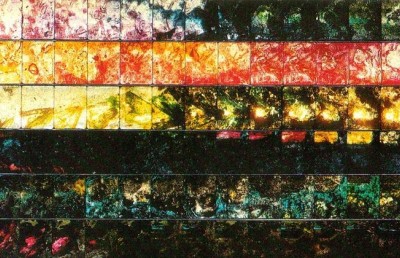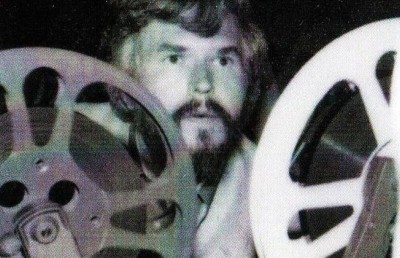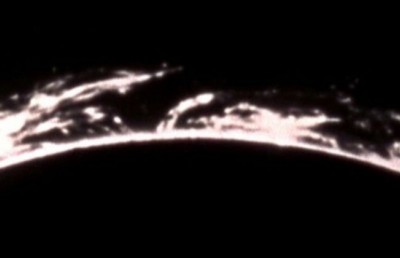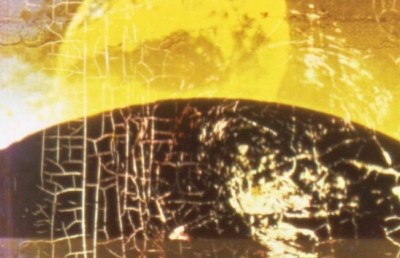The “400 Year Plan”
A belief in art
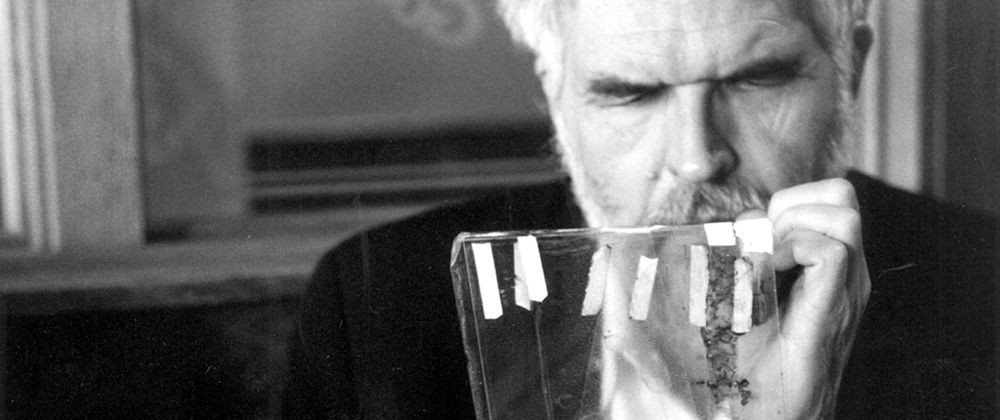
I first met Brakhage in 1987, when he came to talk to our Film Master’s class at York University in Toronto. It was during his talk to our class that I first heard of his famous ‘400 year plan.’ I can still vividly remember the derisiveness with which this statement was met by a handful of the dogmatically political students in the class. And, equally lodged in my memory, is Brakhage’s impassioned defense of his ‘400 year plan,’ which can be briefly summarised by a belief in art’s long term ability to change social attitudes over short term, quick-fix social action: ‘slow change’ over ‘fast change.’ The second time I met Brakhage was 14 years later in Montreal, at the event which was organised by Offscreen’s sister magazine Hors Champ. Brakhage was an invited guest for three of the four days of screenings, and dilligently introduced the screenings on each of the three nights, and stayed to do Q & A’s. Fourteen years later, he was still on the ‘400 year plan,’ and the ‘plan’ was still meeting some resistance. But, as you will gather after reading these transcriptions, one does not get as far as Brakhage did without having thick skin.
This is nowhere more evident than in the wonderful (and hilarious) story of the time Brakhage met Andrei Tarkovsky, a filmmaker he held in utmost regard, at the 1983 Telluride Film Festival. The anecdote was told to me by Peter Rist, who first heard it from someone who was actually at Telluride that year, the film historian William K. Everson. Brakhage’s own account of the event is a must read, and is available online through Fred Camper’s indispensable Brakhage reference site. I urge everyone to read it for an interesting insight into Brakhage. Brakhage, who loved Tarkovsky’s films to death, was extremely excited at the prospect of showing some of his films to Tarkovsky. This was soon arranged in Brakhage’s hotel room. Unfortunately, things did not go as Brakhage had hoped, and each new film that Brakhage would project was met by Tarkovsky with increased anger, criticism, and derision. But the ever optimistic (or stubborn-as-a-mule) Brakhage continued threading film after film, convinced that the next one would meet with Tarkovsky’s approval (none did). This anecdote could lead one to see Brakhage and Tarkovsky as artistic opposites, yet they share the same ‘thick skin’ which allowed their uncompromising ceative visions to flourish regardless of hardship.
The twinning of Snow and Brakhage which I evoked on the front page introduction recalls the often noted, although ultimately false, historical dualism of Melies and the Lumiere brothers. It is usually said by the unexamined eye that the contemporaries Melies and the Lumiere brothers made early films that typified two eventual ‘strands’ of cinema: fantasy/fiction (Melies) and documentary/realism (Lumiere bros.). Anyone who has seen enough films of both, knows full well that this dualism is one of convenience rather than fact. A similar dualism is often at the heart of the coupling of Snow and Brakhage. It was William C. Wees, across a body of critical work on the avant-garde, who first raised the interesting duality in the creative-visual metaphorical nature by noting that the articulation of vision in experimental cinema can be broken down into two concerns: a technologized ‘eye’ and a human ‘eye.’ At one extreme, the filmmaker sees the camera as the principle source of creative vision. At the other extreme, the filmmaker sees the human eye as the principle source of creative vision. Where the former vision is ‘mechanical’ and potentially perfect, the latter is biological and imperfect. The works of Snow and Brakhage are often used to represent this dualism in creative vision, with Snow the ‘technologized eye’ and Brakhage the ‘human eye.’ But, as Wees was the first to note, such a duality flies in the face of the actual experience of the films. As Snow himself said in response to this critical rigidity, “I want analysis, but also ecstasy.” In other words he wants the discipline of the reasoning mind, but also the emotions of the full sensorial experience. While Brakhage, with all his talk of the ‘untutured eye,’ ‘hypnogogic vision,’ and ‘moving visual thinking,’ was keenly aware of both the limits and demands placed on his art by technology, and the potentialities of that same technology on his art. Much of this comes through in the two long talks that are transcribed here on Offscreen.
The tenor and tone of Brakhage’s first transcribed talk (January 27) strikes a particularly sad irony because it is preocuppied centrally with death. There is nothing uncanny about this, but a result of the programming, which is centered on the theme of death. Talking about death can be quite revealing and personal. This in fact was indicative of his talks in general, and by extension, reveals a lot about his art. One of the elements which stuck out the most as I was transcribing the texts is the ease with which Brakhage alternated from deeply personal and in some cases trivial matters, to intensely theoretical and probing issues on art and aesthetics. This all-encompassing approach was in evidence on every occasion that I heard him speak in person (once in Toronto, several times in Montreal). This mix of the intensely personal (family life, birth, death, parenting, illness, politics, etc.) with the intensely aesthetic and poetic is, I feel, a trademark, a signature, of Brakhage Art.



